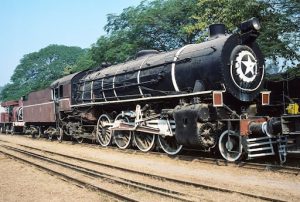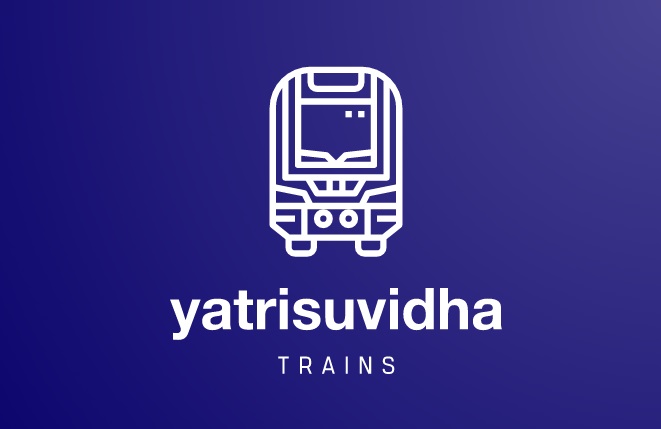
India’s railway network is one of the largest and oldest in the world, and its rich history is celebrated and preserved at the Indian Railways Museum, often referred to simply as the Rail Museum. This museum offers a unique glimpse into the evolution of rail travel in India, showcasing an impressive array of artifacts, locomotives, and memorabilia from different periods. Here’s an in-depth look at everything the Rail Museum has to offer, including ticket prices, exhibits, special attractions, and tips for visitors.
- Overview of the Indian Railways Museum
The National Rail Museum is located in Chanakyapuri, New Delhi, and was inaugurated on February 1, 1977. Spread across an area of approximately 11 acres, the museum provides visitors with an immersive journey into India’s railway history. It serves not only as an exhibition space but also as an educational center for those interested in learning about the technological advancements and cultural heritage associated with Indian Railways.
The museum houses over 90 vintage locomotives and carriages, some dating back to the 19th century. It is the ideal destination for train enthusiasts, history buffs, and families, offering hands-on exhibits, life-sized models, and guided tours to enrich the visitor experience.
- Key Attractions and Exhibits
The National Rail Museum features an array of unique attractions:
- Steam and Diesel Locomotives
One of the museum’s main highlights is its extensive collection of steam, diesel, and electric locomotives. The Fairy Queen, for example, holds the Guinness World Record as the oldest working steam locomotive in the world. Built in 1855 by the British firm Kitson, Thompson, and Hewitson, it’s still a major draw for museum visitors.
Other notable locomotives include:
The Patiala State Monorail Trainways (PSMT): A rare monorail train from the 1900s, used primarily for local transport.
Fireless Steam Locomotive: Operated using steam from a storage tank rather than a firebox, this locomotive is a rarity in the world of rail travel.
- The Indoor Gallery
The indoor gallery houses intricate models, historical documents, vintage photographs, and fascinating artifacts from the colonial era through to modern times. The gallery also features interactive exhibits where visitors can learn about the mechanics and engineering behind various types of trains.
- Saloon Cars and Luxury Coaches
The museum includes luxurious saloon cars that were once reserved for Indian royalty and British officials. Visitors can walk through these opulent carriages, experiencing how the elite traveled. Among them is the Maharaja of Mysore’s Saloon, a magnificently furnished carriage with period decor, and The Prince of Wales Saloon, which was used by the British royal family during their tours of India.
- The Miniature Train Ride
This train ride is a favorite attraction for children and families. It takes visitors around the museum’s grounds, offering a scenic view of the exhibits. The ride, lasting about 10–15 minutes, provides a scaled-down experience of traveling by train and helps visitors better understand the layout of the exhibits.
- Diesel Simulator and Steam Engine Experience
For a more interactive experience, the museum offers simulators that allow visitors to understand how diesel engines work and to feel the sensation of operating a train. This hands-on approach has been popular among children and adults alike, allowing them to immerse themselves in the practical side of railway operations.
- Ticket Prices and Entry Information
The ticket prices vary depending on the age of the visitor and additional services chosen. As of the latest update:
General Entry Ticket
Adults: ₹50 (weekday); ₹100 (weekend)
Children (up to 12 years): ₹10 (weekday); ₹20 (weekend)
Family Pass (2 adults + 2 children): ₹150 (weekday); ₹200 (weekend)
Toy Train Ride
Per Person: ₹20 (weekday); ₹30 (weekend)
Diesel Simulator and Steam Engine Experience
Diesel Simulator: ₹150 for a 15-minute experience
Steam Engine Ride: ₹100 per person
- Educational Programs and Workshops
The Indian Railways Museum hosts educational programs that cater to school children, engineering students, and train enthusiasts. These workshops are designed to introduce participants to basic railway engineering concepts, provide hands-on experiences with historical machinery, and educate them about the significant role that railways have played in India’s socio-economic development.
Some popular programs include:
Model Making Workshops: Kids and students learn to build small train models.
Guided Tours for School Groups: These tours provide insights into the workings of the railway system.
Annual Exhibitions and Competitions: Hosted throughout the year, these events feature model-making competitions, storytelling, and guided sessions by railway experts.
- Special Events and Attractions
Throughout the year, the museum hosts themed events and festivals. Here are a few key events:
Rail Heritage Festival: This annual event celebrates India’s railway legacy and features cultural performances, exhibitions, and tours.
Photography and Art Contests: These contests encourage budding photographers and artists to capture the essence of Indian Railways.
Children’s Day Celebrations: Special programs for children, including storytelling sessions about the history of trains in India, magic shows, and interactive games.
- Historical Background and Highlights
Indian Railways has a storied history dating back to 1853 when the first passenger train ran from Bombay to Thane, covering a distance of 34 km. The Rail Museum’s exhibits highlight the technological, cultural, and political evolution of the Indian Railways over the past 170 years, including:
The transformation from steam to diesel and electric locomotives.
The role of railways during the British colonial era, especially in trade and governance.
The influence of railways on India’s freedom movement and its later role in unifying the country post-independence.
- Visitor Facilities and Amenities
To make the visit comfortable, the museum provides several amenities:
Cafeteria and Food Stalls: Serving snacks, tea, and traditional Indian meals.
Souvenir Shop: Offering a range of railway-themed merchandise, including miniature train models, books, and postcards.
Wheelchair Accessibility: The museum is designed to be wheelchair accessible, with ramps and special provisions for disabled visitors.
Parking Facility: Ample parking is available at a reasonable fee, which can accommodate cars and buses.
- Tips for Visitors
Here are a few tips to enhance your museum visit:
Plan for at Least 2–3 Hours: Given the museum’s extensive exhibits and interactive features, allow enough time to explore the grounds fully.
Avoid Peak Hours: Weekends and holidays can be crowded, so visiting on a weekday is recommended for a more relaxed experience.
Photography Policy: Photography is generally allowed in most areas, but be mindful of restricted areas, as certain rare exhibits may have a “no photography” policy.
Use the Audio Guide: The audio guide provides detailed information about various exhibits, enhancing the educational value of the visit.
- Other Railway Museums Across India
While the National Rail Museum in Delhi is the most famous, several other railway museums across India are worth exploring:
Regional Rail Museum (Howrah, West Bengal): Showcases Eastern Railway artifacts and exhibits, emphasizing the role of railways in West Bengal.
Railway Heritage Museum (Mysore, Karnataka): Known for its steam locomotive displays and vintage coaches, it provides a smaller yet charming experience.
Rewari Steam Locomotive Shed (Haryana): This is the only steam locomotive shed in India still in operation and houses several well-preserved steam engines.
- Future Plans and Expansion
The museum has plans for expansion, aiming to incorporate more interactive digital displays, a 4D theater experience, and additional outdoor exhibits. These developments are set to make the museum an even more dynamic experience for visitors of all ages.
The Indian Railways Museum is not just a museum; it’s a window into the spirit of India’s railways—a symbol of progress, unity, and transformation. With its carefully curated exhibits, interactive displays, and special attractions, the museum appeals to a wide range of visitors. Whether you’re a railway enthusiast, a family looking for an educational outing, or a student eager to learn about the history of engineering, the Indian Railways Museum offers a memorable journey through India’s vibrant railway legacy.

Leave a Reply